Don't wanna be here? Send us removal request.
Text
Disk Type Shaper Cutters
Disk type shaper cutters are versatile tools used in machining processes to shape various materials, including wood, metal, and plastic. These cutters consist of a disk-shaped body with sharp cutting edges arranged around the circumference. They are commonly used in shaping operations where precise and intricate cuts are required.
One of the primary advantages of disk type shaper cutters is their ability to produce complex shapes with high accuracy. Their design allows for a wide range of cutting profiles to be achieved, making them suitable for a variety of applications, from creating decorative moldings to shaping gears and other components.
Additionally, disk type shaper cutters can operate at high speeds, enabling efficient material removal and reducing machining time. This speed, coupled with their precision, makes them valuable tools in industries where productivity and quality are paramount.
However, there are some limitations to consider when using disk type shaper cutters. Their effectiveness can be affected by factors such as the hardness and thickness of the material being cut, as well as the machine's power and stability. Furthermore, the complexity of the shapes they can produce may require careful planning and setup to ensure optimal results.
Disk-type shaper cutters find applications in various industries where precision shaping of materials is required. Some common applications include:
Woodworking: Disk-type shaper cutters are extensively used in woodworking for shaping edges, profiles, and contours on wooden workpieces. They can create intricate designs and smooth finishes on furniture components, cabinetry, moldings, and other wooden products.
Metalworking: In metalworking, disk-type shaper cutters are employed for cutting, shaping, and profiling metal components. They are used in industries such as automotive, aerospace, and machinery manufacturing for producing gears, sprockets, pulleys, and other metal parts with precise dimensions and surface finishes.
Plastic and Composite Materials: Disk-type shaper cutters are utilized in the fabrication of plastic and composite materials for shaping and trimming applications. They are commonly used in industries like automotive, electronics, and consumer goods manufacturing for producing plastic components, composite panels, and molded parts.
Foam Cutting: Disk-type shaper cutters are also employed in the foam processing industry for cutting and shaping foam materials used in furniture upholstery, packaging, insulation, and other applications. They help in achieving clean and accurate cuts on foam blocks and sheets.
Sign Making and Engraving: In the signage industry, disk-type shaper cutters are used for cutting and engraving various materials such as wood, plastic, acrylic, and metal. They enable the creation of intricate designs, letters, and patterns for signage, displays, and decorative purposes.
Ceramic and Stone Fabrication: Disk-type shaper cutters are employed in the fabrication of ceramic tiles, stone countertops, and other architectural elements. They help in cutting, profiling, and edging ceramic and stone materials to precise specifications for construction and interior design applications.
These are just a few examples of the diverse applications of disk-type shaper cutters across different industries. Their versatility, precision, and efficiency make them essential tools for shaping a
In conclusion, disk type shaper cutters are valuable tools for machining operations that require precision and versatility. While they offer numerous benefits, including the ability to create intricate shapes quickly and accurately, they also have limitations that need to be taken into account during the machining process. Overall, when used correctly, disk type shaper cutters can greatly enhance productivity and quality in various manufacturing applications.
0 notes
Text
Surface Broach
Surface broaching is a machining process used to create precise, intricate shapes on the surface of a workpiece. It involves the use of a broach, a specialized cutting tool with multiple teeth, to remove material in a linear motion. As the broach is pulled or pushed across the workpiece, each tooth progressively cuts deeper into the material, forming the desired shape.
One of the key advantages of surface broaching is its ability to produce complex shapes with high accuracy and surface finish in a single pass. This makes it ideal for applications where tight tolerances and fine surface finishes are required, such as in the automotive, aerospace, and medical industries.
The process begins with careful planning and design of the broach, taking into account the specific shape and dimensions required for the workpiece. Once the broach is ready, it is mounted securely onto a broaching machine, which provides the necessary force and motion for the cutting action.
During operation, the workpiece is clamped firmly in place, and the broach is either pulled or pushed across its surface, depending on the type of broaching machine being used. As the broach moves along its path, each tooth removes a small amount of material, gradually forming the desired shape.
Surface broaching can be performed using either internal or external broaches, depending on whether the shape being cut is inside a hole or on the outer surface of the workpiece. Additionally, various types of broaching processes, such as rotary broaching or keyway broaching, can be employed to achieve different shapes and features.
In conclusion, surface broaching is a highly versatile machining process that offers precise control over shape and surface finish, making it indispensable in industries where intricate components are required. With advancements in tooling technology and machine capabilities, surface broaching continues to play a vital role in manufacturing processes worldwide. For more information on surface broaching and related services, you can visit Steelmans website at https://www.steelmans.com/.
0 notes
Text
Spline Broaches
Spline broaches are cutting tools used in machining to produce splines, which are ridges or teeth on a shaft, gear, or other mechanical component. These ridges are designed to mesh with a corresponding part, such as a gear or a mating component, enabling the transmission of torque or motion.
The spline broach itself is a long, narrow tool with a series of teeth or cutting edges along its length, each designed to remove material in a specific pattern. The broach is typically made of hardened steel to withstand the forces involved in cutting metal.
Using a spline broach involves inserting the broach into a pre-drilled hole or slot in the workpiece and then applying pressure to move the broach through the material. As the broach advances, its teeth gradually remove material, forming the desired spline shape. This process is often performed using a broaching machine or a hydraulic press to provide the necessary force.
Spline broaches come in various shapes and sizes to accommodate different spline designs and workpiece materials. They are commonly used in industries such as automotive manufacturing, aerospace, and machinery production where precise spline profiles are essential for proper functioning of mechanical components.
Conclusion: In conclusion, spline broaches stand as indispensable tools for modern machining operations, offering unparalleled precision, efficiency, and versatility. Their ability to create intricate spline profiles with minimal setup time and high productivity makes them indispensable assets in the manufacturing industry. As technology advances, innovations in spline broach design and materials continue to enhance their performance and broaden their applications. Thus, investing in high-quality spline broaches is a prudent choice for manufacturers seeking to optimize their production processes and maintain a competitive edge in today's market.
By harnessing the capabilities of spline broaches, manufacturers can achieve superior quality, efficiency, and cost-effectiveness in the production of precision-engineered components, driving innovation and advancement across various industries.
0 notes
Text
VERTICAL BROACHING MACHINE
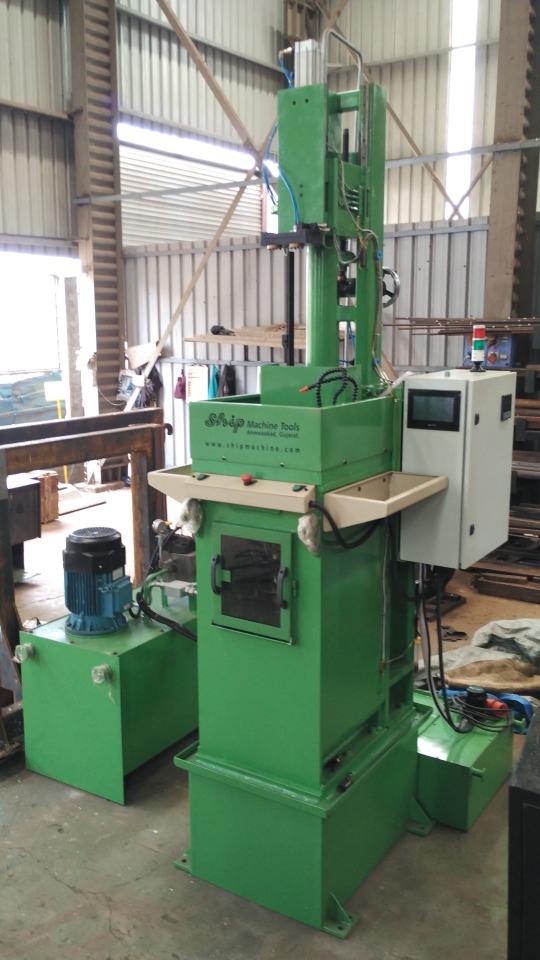
A vertical broaching machine is a specialized tool used in machining operations to produce precision cuts or shapes in metal workpieces. It employs a vertically oriented linear motion to remove material from the workpiece through a series of cutting teeth or broaches.
Here's how a vertical broaching machine typically works:
Setup: The workpiece is securely fixed in place on the machine's table or fixture.
Broach Selection: A broach, which is a long, slender cutting tool with multiple teeth of increasing size, is selected based on the desired shape or cut to be produced.
0 notes
Text
Gear Shaving Cutters
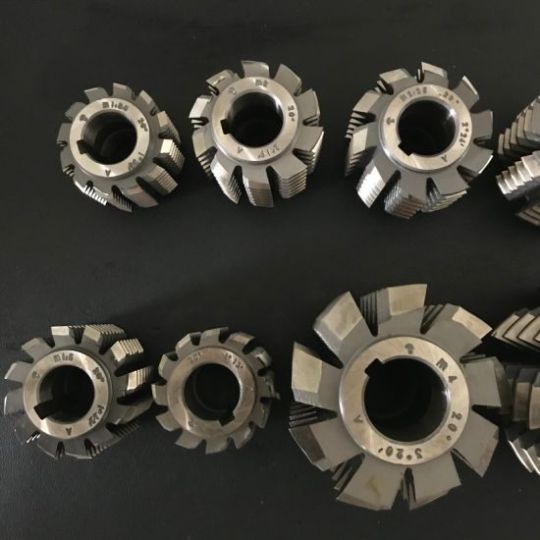
Gear shaving cutters are meticulously crafted with precision to ensure optimal performance and durability. With advanced manufacturing techniques and rigorous quality control, we guarantee reliability and consistency in every cutter we produce. Whether you require standard or custom designs, we cater to diverse specifications to suit your specific application requirements.
0 notes
Text
Disk Type Shaper Cutters
Disk type shaper cutters are precision cutting tools used in shaping operations, particularly in the manufacturing of gears and other intricate mechanical components. These cutters consist of a circular disk with multiple cutting teeth arranged around its perimeter. Each tooth is meticulously designed and ground to specific dimensions and geometries to achieve precise shaping results.
The disk type shaper cutters are commonly made from high-speed steel (HSS) or carbide materials to ensure durability and longevity during machining operations.
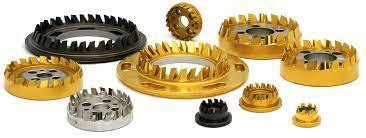
0 notes
Text
Hub Type Shaper Cutters
Hub type shaper cutters are precision cutting tools used in shaping operations in manufacturing processes, particularly in metalworking and woodworking industries. These cutters are designed with a central hub or arbor that allows them to be mounted securely onto a shaper machine, ensuring stability and accuracy during operation.
The construction of hub type shaper cutters typically involves high-quality materials such as high-speed steel (HSS) or carbide, chosen for their durability and ability to withstand the forces encountered during cutting. The hub or arbor is usually made of steel and is machined to precise tolerances to ensure proper alignment and minimal runout.
These cutters come in a variety of profiles and configurations to suit different shaping tasks, ranging from simple contours to intricate designs. Common profiles include straight, helical, and curved shapes, each tailored to produce specific geometries on the workpiece. Additionally, hub type shaper cutters may feature multiple cutting edges to enhance productivity and prolong tool life.
One of the key advantages of hub type shaper cutters is their versatility and ability to produce precise shapes with smooth finishes. They are commonly used in the production of gears, splines, keyways, and other components requiring accurate profiles. Whether used in high-volume production environments or custom fabrication shops, hub type shaper cutters offer reliable performance and consistent results, making them essential tools in various manufacturing operations.
0 notes
Text
Push Type Broaching Machine
A Push Type Broaching Machine is a specialized tool used in machining operations to produce precise and intricate shapes or features on workpieces. It operates by pushing a broach tool through the workpiece material, removing material incrementally to achieve the desired shape or form.
Here's a breakdown of its key components and how it works:
Broach Tool: The broach tool is the primary cutting tool used in the machine. It consists of multiple teeth or cutting edges arranged in a sequence corresponding to the desired shape to be cut into the workpiece.
Ram or Pusher: The ram or pusher is responsible for pushing the broach tool through the workpiece. It applies the necessary force to cut the material efficiently.
Guide System: A guide system ensures the precise alignment and movement of the broach tool during the cutting process. It helps maintain accuracy and repeatability in the machining operation.
Workpiece Fixture: The workpiece fixture holds the workpiece securely in place during the broaching process. It ensures stability and proper positioning to achieve accurate cuts.
Hydraulic System (optional): In some models, a hydraulic system may be incorporated to provide the necessary force for the broaching operation. This system enhances the efficiency and power of the machine.
Operation:
Workpiece Setup: The workpiece is securely mounted onto the fixture of the broaching machine, ensuring it is properly aligned for the desired cut.
Tool Selection: The appropriate broach tool is selected based on the shape or feature to be machined into the workpiece.
Broach Insertion: The broach tool is inserted into the workpiece, typically starting from one end and gradually pushing through until the entire length of the cut is completed.
Pushing Action: The ram or pusher applies force to the broach tool, pushing it through the workpiece material. As the broach advances, it removes material incrementally, forming the desired shape or feature.
Withdrawal: Once the broach tool has passed through the entire length of the cut, it is withdrawn from the workpiece, completing the machining operation.
Push Type Broaching Machines are commonly used in industries such as automotive, aerospace, and manufacturing, where precision machining of complex shapes is required. They offer high accuracy, efficiency, and repeatability in producing intricate components.
0 notes
Text
Worm Wheel Hobs
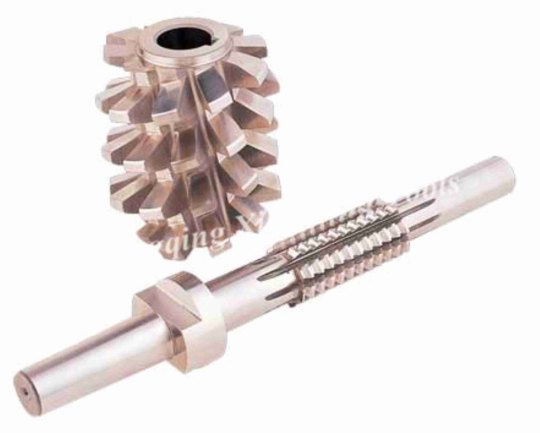
Steelmans manufacturing top-quality worm wheel hobs, essential tools for precision gear cutting in various industries. Crafted with meticulous attention to detail, these hobs are designed to deliver unparalleled performance and durability. Engineered with advanced technology and high-grade materials, Steelmans' worm wheel hobs ensure precise tooth profiles and smooth operation, enhancing the efficiency and reliability of gear manufacturing processes.
0 notes
Text
Straight Spline Hobs
Straight spline hobs are precision-engineered cutting tools designed for the production of straight-sided splines, gears, and other similar components in various industrial applications. Manufactured by Steelmans, a renowned leader in cutting tool technology, these hobs exhibit exceptional durability, accuracy, and efficiency.
Crafted from high-quality materials using advanced machining techniques, Steelmans straight spline hobs ensure superior performance and longevity, even in demanding manufacturing environments. Each hob features precisely ground teeth with optimized geometries to achieve precise tooth profiles and excellent surface finishes on workpieces.
Steelmans' commitment to innovation and quality is evident in their straight spline hobs, which undergo rigorous testing and quality control measures to meet or exceed industry standards. These hobs are available in a range of sizes and specifications to suit diverse machining requirements, offering versatility and flexibility to manufacturers.
Engineered for optimal chip evacuation and coolant flow, Steelmans straight spline hobs enhance productivity and tool life while minimizing machining downtime. Their ergonomic design facilitates easy setup and operation, making them ideal for both small-scale workshops and large-scale production facilities.
With Steelmans straight spline hobs, manufacturers can achieve high precision and consistency in gear and spline production, leading to enhanced product quality and performance. Whether used in automotive, aerospace, or general engineering applications, these cutting tools deliver exceptional results, ensuring cost-effectiveness and competitiveness for businesses worldwide.
0 notes
Text
Straight Beveal gear cutters
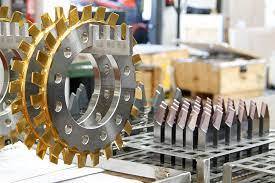
Straight Bevel gear cutters are meticulously crafted to meet the highest standards of precision and durability. Designed for superior performance in gear cutting applications, these cutters are engineered with precision-ground teeth to ensure smooth and accurate gear profiles.
Our Straight Bevel gear cutters are expertly manufactured using high-quality materials, resulting in exceptional strength and longevity. Whether you're shaping gears for automotive, aerospace, or industrial machinery, our cutters deliver consistent and reliable results, making them an essential tool for any gear manufacturing operation.
0 notes
Text
Horizontal Broaching Machine
A horizontal broaching machine is a precision machining tool designed for efficiently cutting keyways, slots, and other intricate shapes into workpieces. Its horizontal orientation allows for the smooth movement of the broach tool along a linear path, ensuring precise and consistent cuts.
This machine typically consists of a sturdy base, a horizontal bed or carriage where the workpiece is secured, and a vertically mounted broach tool. The broach tool, equipped with multiple cutting teeth or edges, is guided through the workpiece in a linear motion, removing material gradually with each pass.
Horizontal broaching machines are widely used in various industries such as automotive, aerospace, and manufacturing for producing internal features in components like gears, pulleys, and shafts. They offer several advantages including high accuracy, repeatability, and the ability to produce complex shapes efficiently.
With their robust construction and advanced control systems, horizontal broaching machines enable manufacturers to achieve precise machining operations while maintaining productivity and quality standards.
0 notes
Text
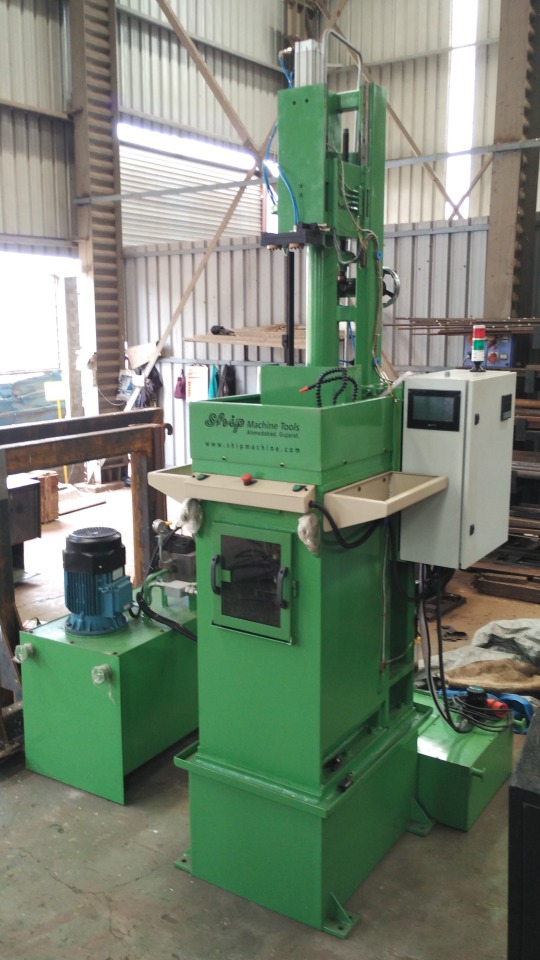
A Vertical Broaching Machine is a specialized tool used in metalworking to precisely shape and cut internal features of a workpiece. This towering machine operates vertically, allowing for efficient and accurate machining of keyways, splines, and other intricate profiles within materials such as steel, brass, and aluminum.
0 notes
Text
Gear Hobs
Gear hobs are precision tools used in the manufacturing of gears, essential components in various machinery and mechanical systems. These cylindrical cutters feature specially designed teeth that precisely shape gear teeth profiles onto raw material blanks. Gear hobs come in various sizes and configurations to accommodate different gear types and sizes, ensuring accuracy and efficiency in the gear cutting process.
1 note
·
View note